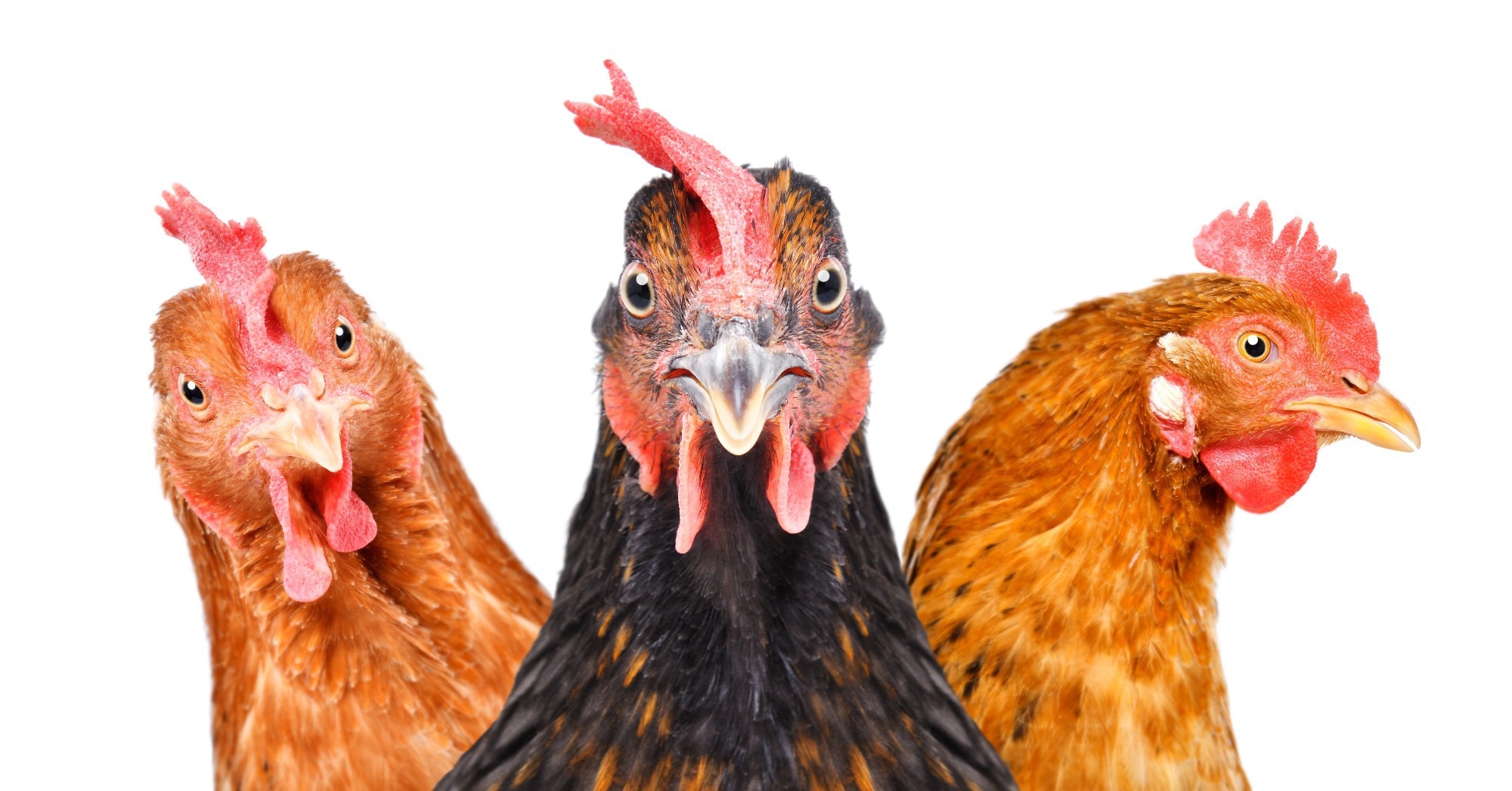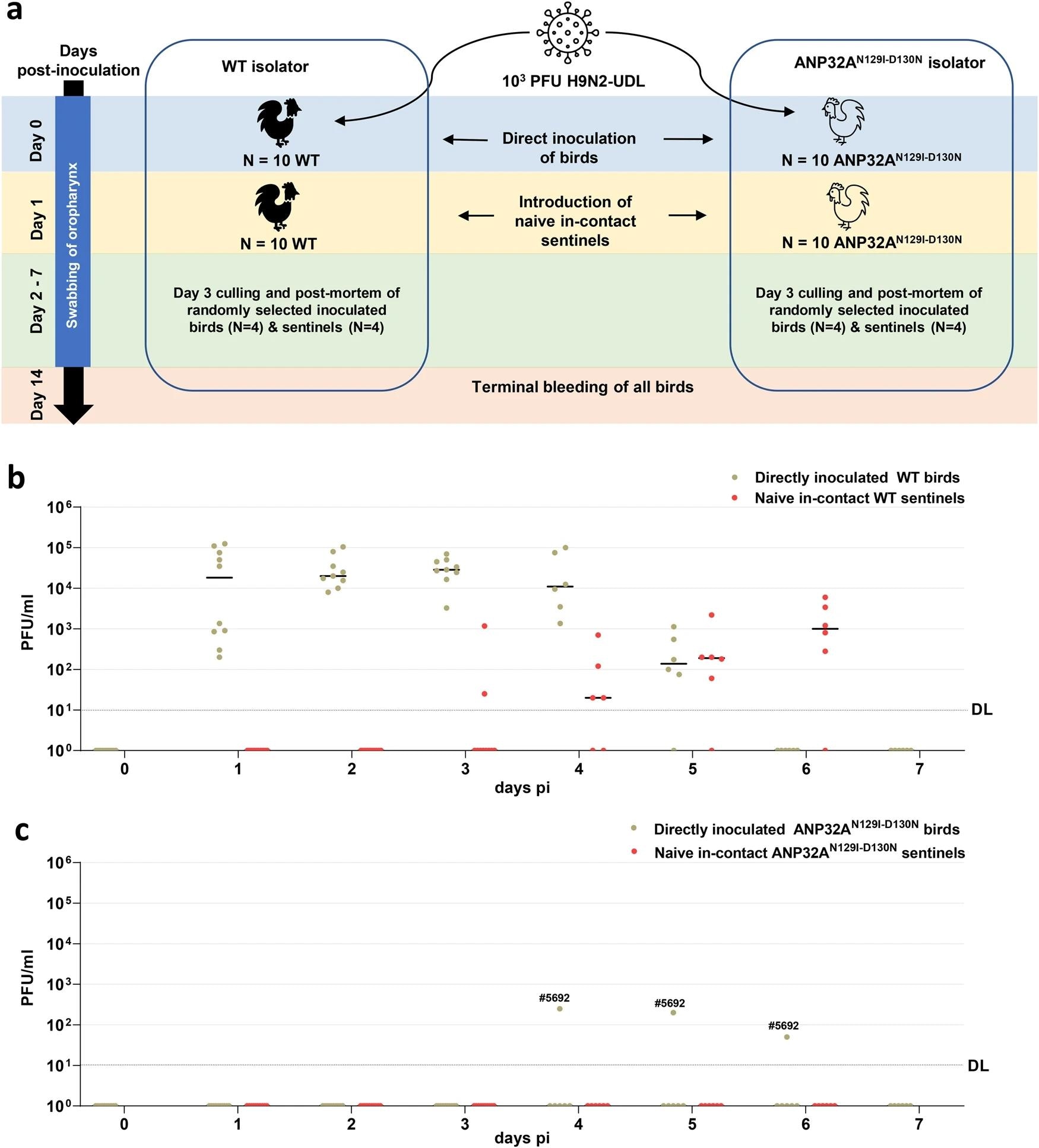In a recent study published in the journal Nature Communications, researchers developed avian influenza-resistant chickens through multi-gene Clustered Regularly Interspaced Short Palindromic Repeats (CRISPR/Cas9) editing, targeting Acidic Nuclear Phosphoprotein 32 (ANP32)A, ANP32B, and ANP32E to inhibit viral replication and prevent viral escape mechanisms.
 Study: Creating resistance to avian influenza infection through genome editing of the ANP32 gene family. Image Credit: Sonsedska Yuliia / Shutterstock
Study: Creating resistance to avian influenza infection through genome editing of the ANP32 gene family. Image Credit: Sonsedska Yuliia / Shutterstock
Background
Influenza A viruses (IAVs) pose significant global economic, health, and pandemic risks due to their impact on poultry and potential for human infection. Current control strategies, like vaccination, are unreliable and controversial, underscoring the need for innovative solutions. The interaction between IAV's ribonucleic acid (RNA) polymerase and host-specific ANP32 proteins is key to the virus's ability to infect different species. However, comprehensive solutions require further research on viral adaptation, the efficacy of multi-gene editing, and the broader consequences of such genetic changes.
About the study
Fertile eggs from Hy-line layer flocks at the National Avian Research Facility in the United Kingdom (UK) were utilized in experiments that adhered to UK regulations, were reviewed by ethical boards, and conducted by licensed personnel. Primordial germ cells (PGCs) were extracted from eggs, cultured, and expanded before gene editing. Various CRISPR/Cas9 vectors were employed for editing, with sequences selected using a design tool and synthesized by companies like Invitrogen and Integrated deoxyribonucleic acid (DNA) Technologies. Several strategies were used to edit ANP32A, ANP32B, and ANP32E genes. Edited cells were screened using Polymerase Chain Reaction (PCR) and Sanger sequencing, with specific primers for each gene alteration.
For transcriptome analysis, PGCs were expanded, RNA was subsequently extracted and subjected to quality checks, then utilized for complementary DNA (cDNA) library construction, followed by RNA-seq performance, with the resulting reads undergoing filtration and quality analysis. Data was mapped to the chicken genome assembly, and differential expression analysis was conducted. This extensive process ensured the careful, regulated study and modification of genes within PGCs for research purposes.
In the study, ANP32A expression was analyzed in both gene-edited cells and ANP32A- knockout (AKO) embryos, utilizing the Radioimmunoprecipitation Assay Buffer (RIPA) lysis buffer and a series of protocols for lysing and subsequent western blotting. Specific antibodies were used in the immunoblotting phase, followed by a visualization process involving the Odyssey Imaging System. In another experiment, 150,000 PGCs underwent differentiation into fibroblast-like cells through a series of incubations and medium changes, with specific conditions and ingredients for the culture medium. Madin-Darby canine kidney (MDCK) cells were maintained under specific conditions, and a special set of triple-knockout human eHAP1 cells was utilized.
Influenza polymerase activity was evaluated using a chicken polI minigenome system and various plasmids. Different procedures and ingredients were followed for transfection, incubation, and lysis before assessing bioluminescence. In vivo experiments involved Hy-line layer chickens with specific housing, inoculation, and monitoring procedures to study influenza virus transmission. Various assays were used for virus titration, including plaque assay on MDCK cells and haemagglutination inhibition assays.
Further, viruses isolated from chicken swabs were sequenced after inoculation into chicken eggs and fluid harvest, with detailed RNA extraction, PCR amplification, and sequencing protocols. Infection studies on human airway epithelial cells involved specific washing, infection, and harvest protocols. A competition assay was conducted between different virus strains in chicken eggs or human cells, with a meticulous procedure for RNA extraction, cDNA generation, and PCR amplification.
Statistical analysis was carried out using various methods depending on the experiment, including T-tests and Analysis of Variance (ANOVAs), among others, with illustrations graphically represented for clarity and comprehensive interpretation.
Study results
Researchers utilized CRISPR/Cas9 and a short single-stranded oligonucleotide (ssODN) template to engineer a minute but significant alteration in the chicken ANP32A gene, intending to thwart IAV replication. This alteration, executed in PGCs, was meticulously analyzed, revealing no off-target mutations or significant gene expression changes. Notably, IAV polymerase activity was hindered in the edited cells, emphasizing ANP32A's role in viral replication.
 a Schematic of low-dose in vivo challenge of 2-week-old chickens with H9N2-UDL influenza A virus (A/chicken/Pakistan/UDL01/08). Chickens were housed in negative pressure poultry isolators. Prior to challenge all birds were bled from the wing vein to obtain pre-infection sera. Groups of ten WT (black) chickens or ten ANP32AN129I-D130N (white) chickens were intranasally inoculated with 1 × 103 PFU of H9N2-UDL virus per bird. Uninoculated sentinel chickens were introduced into the isolators 24 h post infection to assess for transmission from the directly inoculated birds. Oropharyngeal cavities of each bird were swabbed daily from the day of inoculation (D0) until day 7 (D7) post-inoculation. Infectious virus titre in swabs was measured by plaque assay on MDCK cells (b, c). c Bird ID number for directly inoculated ANP32AN129I-D130N birds above the detection limit is indicated. DL detection limit of 10 PFU/ml for plaque assay.
a Schematic of low-dose in vivo challenge of 2-week-old chickens with H9N2-UDL influenza A virus (A/chicken/Pakistan/UDL01/08). Chickens were housed in negative pressure poultry isolators. Prior to challenge all birds were bled from the wing vein to obtain pre-infection sera. Groups of ten WT (black) chickens or ten ANP32AN129I-D130N (white) chickens were intranasally inoculated with 1 × 103 PFU of H9N2-UDL virus per bird. Uninoculated sentinel chickens were introduced into the isolators 24 h post infection to assess for transmission from the directly inoculated birds. Oropharyngeal cavities of each bird were swabbed daily from the day of inoculation (D0) until day 7 (D7) post-inoculation. Infectious virus titre in swabs was measured by plaque assay on MDCK cells (b, c). c Bird ID number for directly inoculated ANP32AN129I-D130N birds above the detection limit is indicated. DL detection limit of 10 PFU/ml for plaque assay.
The genetic intervention was executed by transferring edited PGCs into host embryos, leading to the birth of live chickens that solely generated edited gametes. These birds were subsequently mated, with offspring bearing the desired genetic edit. Observations indicated normal development, behavior, and growth among the edited chickens, similar to their wild-type counterparts.
The efficacy of this genetic modification was tested by exposing the chickens to IAV. Remarkably, while the virus thrived in wild-type birds, it was virtually inactive within the ANP32A-edited population, barring one instance of reduced viral activity. Subsequent serological tests largely corroborated the absence of active infections within the edited group, hinting at the potential of this genetic approach in rendering chickens resistant to IAV-a breakthrough with substantial implications for avian health and associated industries.
The resilience of the edited chickens was further evaluated against increased IAV exposure. Even when subjected to a virus dose a thousandfold higher, the modified chickens displayed no infection signs, in stark contrast to the wild-type group that exhibited pronounced viral activity and transmission. Minimal and sporadic virus shedding was noted among the edited chickens, indicating a significant dampening of viral activity and spread due to genetic modification.
An in-depth analysis of the viruses from the edited chickens revealed specific mutations, especially within the PA viz polymerase acidic protein gene and PB2 viz polymerase basic protein 2 genes. These mutations enhanced the interaction between the viral polymerase and the modified ANP32A protein, a discovery with potential implications for human health, as the same mutations also improved the virus's efficiency with human ANP32 proteins. However, these mutations did not offer a distinct advantage in chicken cells or eggs, suggesting further complexity in the virus's potential human adaptation, possibly necessitating additional alterations in the viral Hemagglutinin (HA) protein.
Further structural examinations suggested that these mutations' effects might be mediated through indirect structural changes rather than direct interactions with the ANP32A protein, underscoring the intricate host-virus dynamics in influenza's species barrier and adaptation risks.
Moreover, in the face of ANP32A absence, the PA-349K PB2-M631L double mutant H9N2-UDL escape virus replicated in chicken embryos, a testament to its adaptability. Experiments further revealed that the complete deletion of ANP32A did not entirely deter certain mutant influenza strains, suggesting the necessity for broader edits across all ANP32 variants to achieve comprehensive influenza resistance in chickens.